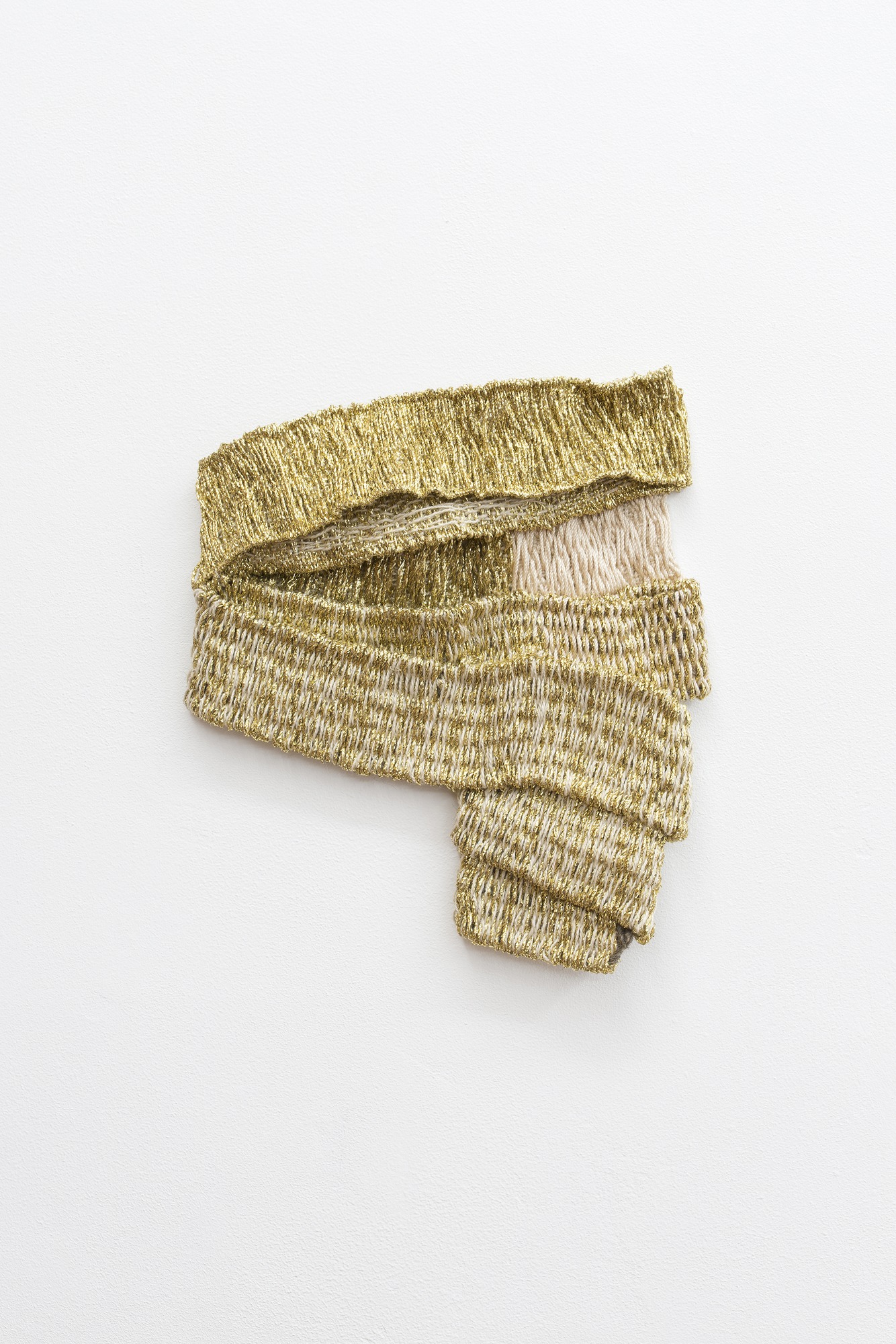Active Threads
08 May - 05 Sep 2021

Hana Miletić, Materials, 2020, Hand-woven textile (brown-gray raw wool, golden metal yarn, natural cotton and beige mercerized cotton), 20 x 22,5 x 1,5 cm, Courtesy the artist Photo: © Isabelle Arthuis
JUAN PÉREZ AGIRREGOIKOA, KADER ATTIA, CIAN DAYRIT, EDITH DEKYNDT, KYUNGAH HAM, MAGDALENA KITA, ELLEN LESPERANCE, HANA MILETIĆ
The international group exhibition Active Threads inquires into the social and political relevance of textiles today. It explores how textile fabrics still function as extremely effective means of communication, even in our present digital era. Within this specific context, the exhibition touches upon geopolitical conflicts, latent and obvious postcolonial wounds and examples of civil protest, but also motifs drawn from fan culture. It thus becomes evident in just how many ways textiles can serve as catalysts of societal and cultural processes.
Textiles are to be found in all parts of the world. They form extensive networks, in which historical trade routes and individual biographies manifest themselves, just as the discriminating consequences of capitalism. In addition, textile fabrics serve as a transcultural archetype of social cohesion within a society – not least due to the fact that textile structures are based on the ties between individual threads that only together produce a durable fabric. The socially meaningful role of textile materials also becomes apparent in clothing, whose function as a kind of second skin via which we communicate is a familiar phenomenon. However, this exhibition focusses more on the less obvious, everyday and politically charged situations, in which textile fabrics attain social relevance, for example, by lending a voice to those who are otherwise speechless. Textiles connect humans and things, network cultures and geographies, interweave what is unrelated or destroyed. They create identity and community, and promote collective experiences. But textiles also play a role when ingrained conceptions of society and political systems are being called into question. The exhibition illustrates in which form textile fabrics and techniques can transport political messages, how decoration transforms into radical symbolism and how fabrics support memories or preserve our material environment. In their works – including handcrafted or industrially produced woven artefacts, hand-stitched works, installations, gouaches and painted fabric banners – the eight international artists challenge the frequently used metaphor of the “social fabric” and reflect today’s forms of societal coexistence and solidarity.
The international group exhibition Active Threads inquires into the social and political relevance of textiles today. It explores how textile fabrics still function as extremely effective means of communication, even in our present digital era. Within this specific context, the exhibition touches upon geopolitical conflicts, latent and obvious postcolonial wounds and examples of civil protest, but also motifs drawn from fan culture. It thus becomes evident in just how many ways textiles can serve as catalysts of societal and cultural processes.
Textiles are to be found in all parts of the world. They form extensive networks, in which historical trade routes and individual biographies manifest themselves, just as the discriminating consequences of capitalism. In addition, textile fabrics serve as a transcultural archetype of social cohesion within a society – not least due to the fact that textile structures are based on the ties between individual threads that only together produce a durable fabric. The socially meaningful role of textile materials also becomes apparent in clothing, whose function as a kind of second skin via which we communicate is a familiar phenomenon. However, this exhibition focusses more on the less obvious, everyday and politically charged situations, in which textile fabrics attain social relevance, for example, by lending a voice to those who are otherwise speechless. Textiles connect humans and things, network cultures and geographies, interweave what is unrelated or destroyed. They create identity and community, and promote collective experiences. But textiles also play a role when ingrained conceptions of society and political systems are being called into question. The exhibition illustrates in which form textile fabrics and techniques can transport political messages, how decoration transforms into radical symbolism and how fabrics support memories or preserve our material environment. In their works – including handcrafted or industrially produced woven artefacts, hand-stitched works, installations, gouaches and painted fabric banners – the eight international artists challenge the frequently used metaphor of the “social fabric” and reflect today’s forms of societal coexistence and solidarity.
